A strong winter nor’easter was predicted, working its way up the US East Coast to dump nearly a foot of snow where I live. What better time to field test my latest weather sensor rig?
It’s been a while since I posted anything. Since starting a new job last spring, I’ve been busy with work, but fortunately, the holidays have afforded me some time to go back and revisit my Raspberry Pi project.
Previously, I’d gotten a Pi3B+ sending telemetry to the cloud using a Node.js tutorial; later, I had to learn all over again in Python in order to use a Pi Zero, because the Pi Zero doesn’t support the version of Node that I needed. I’ve since postponed the cloud presentation in order to focus on building a simple standalone weather station using a different Python3-based tutorial.
Along the way, I’ve also tested solar power, and briefly got that to work, but I’ll have details in a later post. I need to add some components to the design. Here’s a pic all the same – running off the Lipo though, probably not the panel.
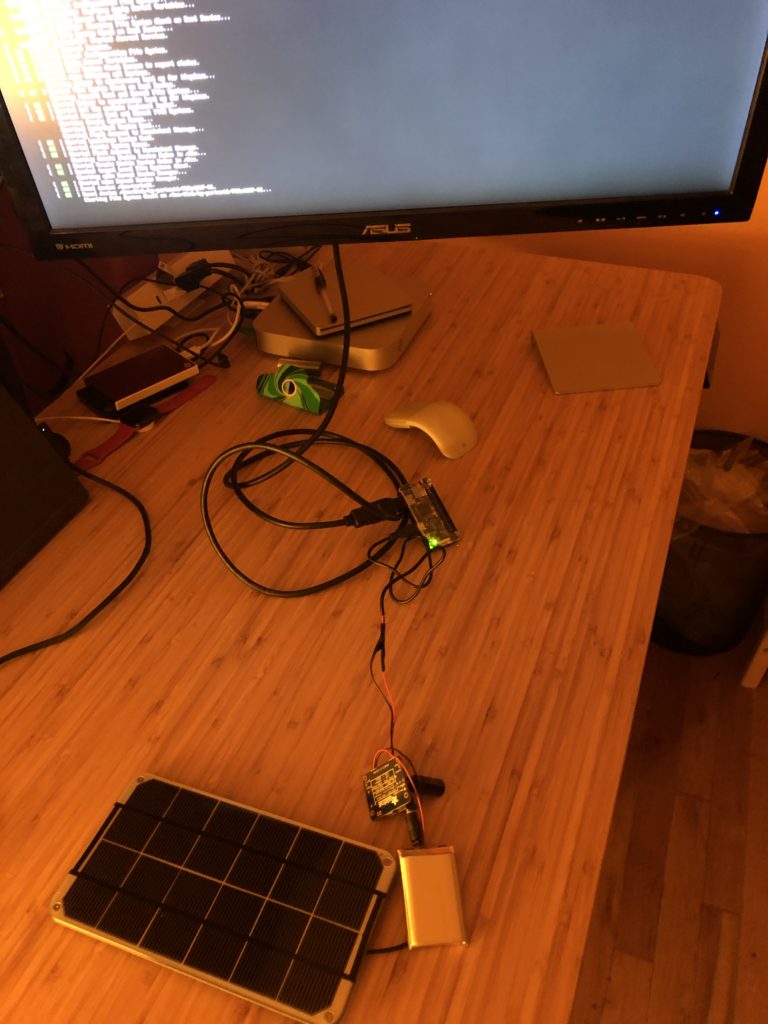
Meanwhile, to test my new rig, I wired up my old friend, the BME280, to the PiZero via a breadboard. To protect the sensor from the elements, I mounted it in a small plastic box.
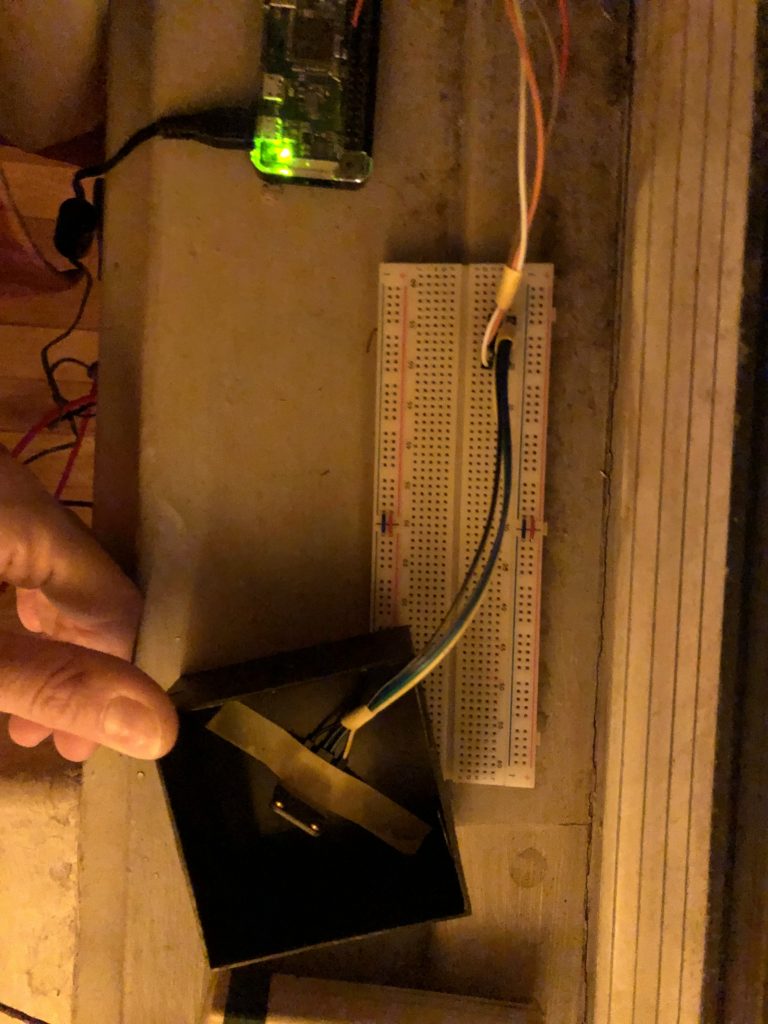
Then, I hung the sensor out the window as the snow began to fall. The BME280 would brave the elements while the Pi stay inside, warm and cozy. I fired up the script on the Pi (shelled in using VS Code on my Surface Pro), and immediately telemetry started showing, line by line, second by second.
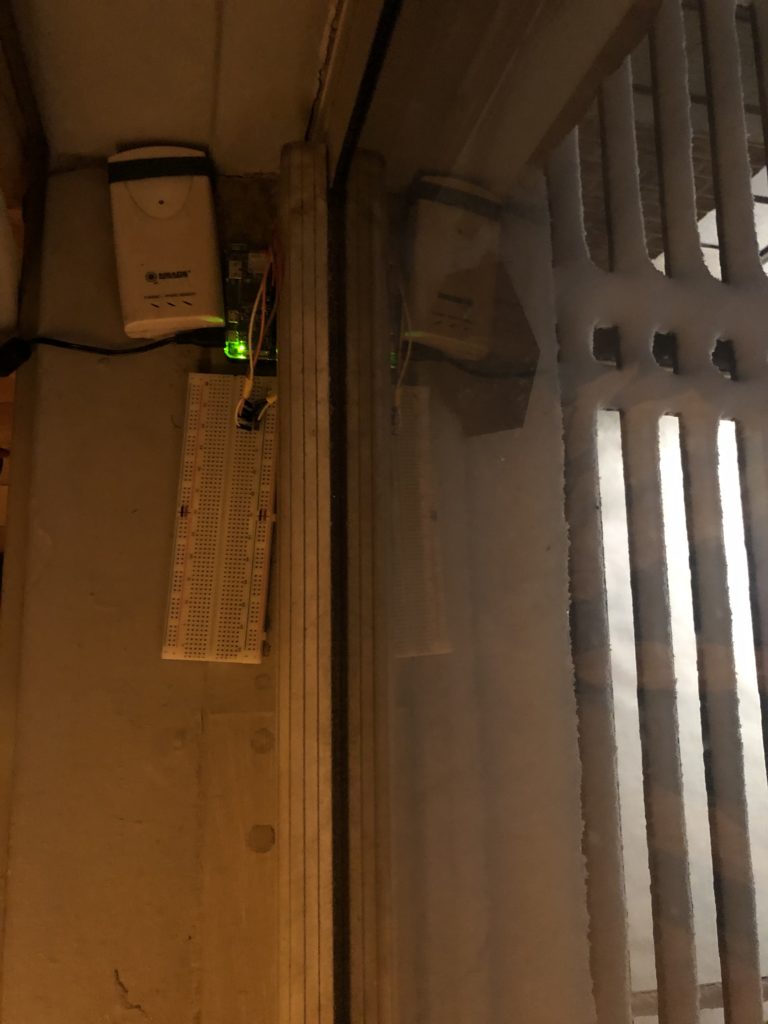
The next morning, I checked my shell session – still active, and telemetry was still arriving. Since Celsius is default, it was quite a few degrees in the negative!
I looked out the window, and saw the housing was entombed in snow.
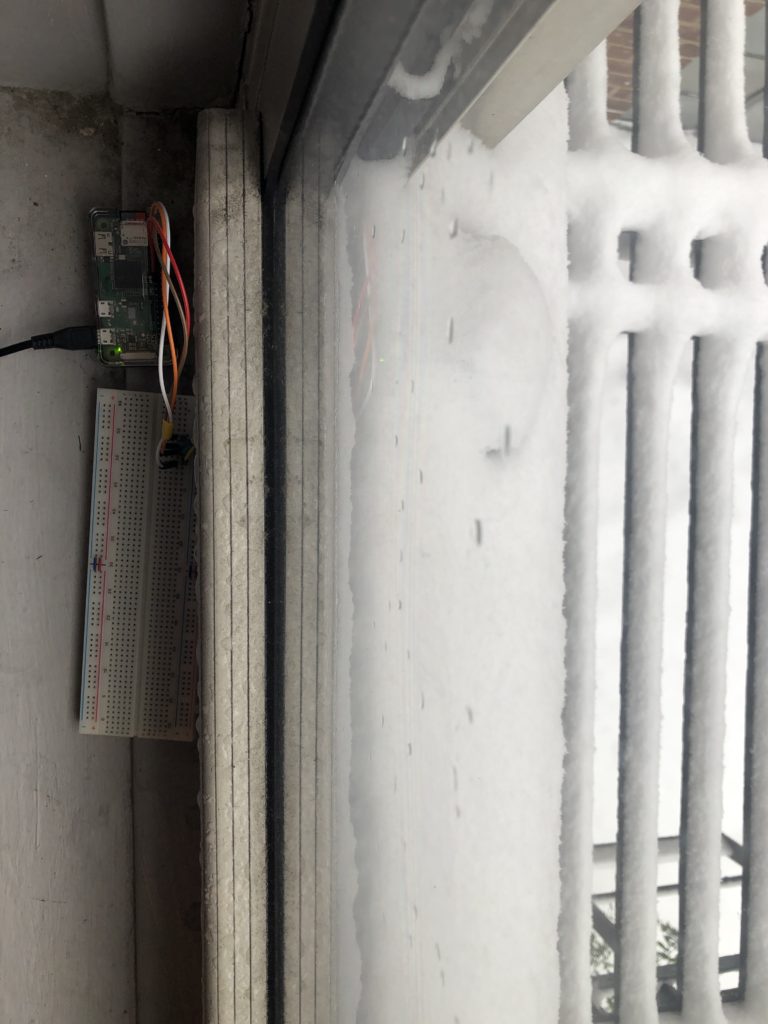
A little scrape later and I could make out the box. Data still being sent.
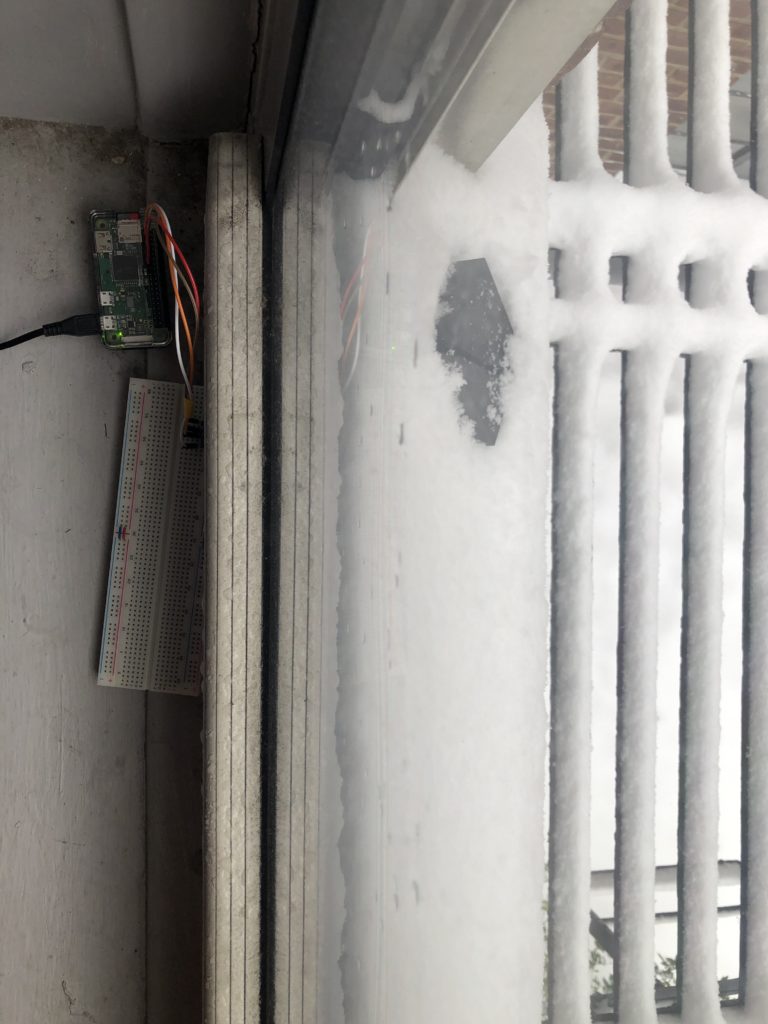
I eventually brought the sensor back inside, figuring it might have been jealous of the PiZero’s warm surroundings. It was a successful first test however, of the sensor being in adverse elements – my previous tests were in the spring and summer, and always on nice weather days.
I’m waiting on some more sensors, and will need to wire and code those. I also plan to wire things directly in order to remove the breadboard, and all of this will eventually rely on a HAT that I’ve ordered. So, I’m a ways off from completion, but having a simple test using something new yet also familiar was rather gratifying.